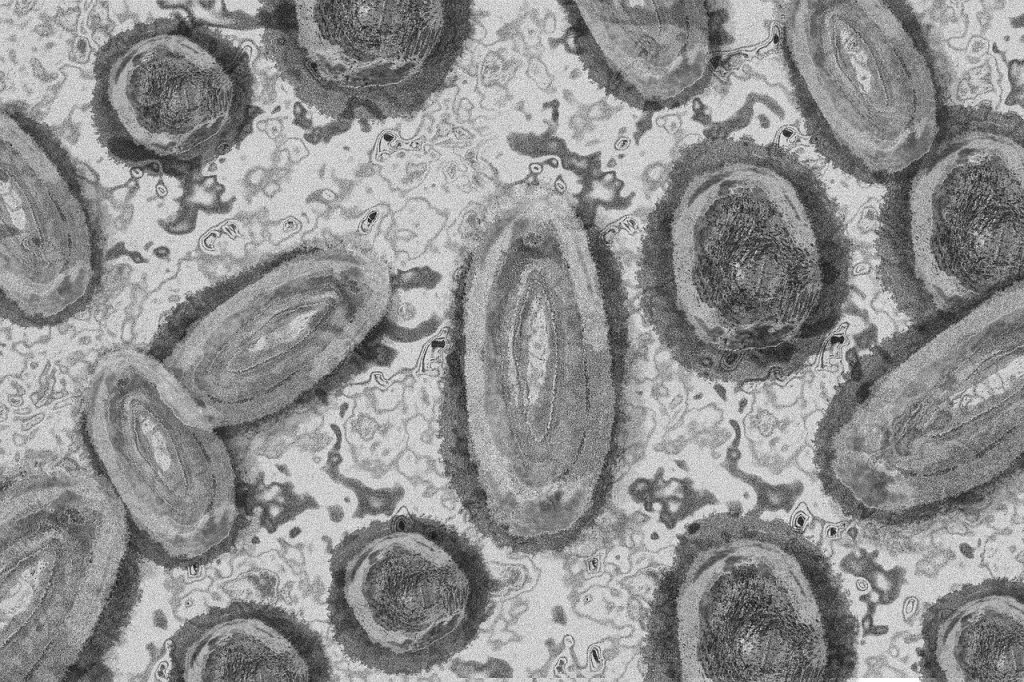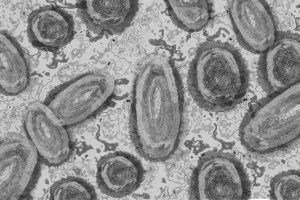
Monkeypox is a rare viral disease that recently emerged as a severe threat after its cases outside of its natural African zone. In the past, its incidence was limited to specific areas and rarely got any attention from global health communities.
However, recent studies suggest that it has already started to spread globally even in the non-endemic regions. Due to this it has now gained public concern and is discussed widely by healthcare authorities worldwide.
Global trends
Mpox was first discovered in lab monkeys in 1958 and was primarily restricted to the Central and Western parts of the African continent. At first, it predominantly affected people who had direct contact with infected animals such as rodents and primates. The first human case of Mpox was registered in the Democratic Republic of Congo in 1970.
After this, there has been a significant and dramatic rise in the cases of Mpox and outbreaks in various parts of the world besides the African continent. In 2022-23 there was a remarkable global outbreak of a subtype of the West African Clade, Clade II which causes milder symptoms of Mpox as compared to the Central African variant.
The significant remark of Mpox is its ability to spread in new and previously unknown communities. Due to globalisation, people travel to different corners of the world and in return they sometimes carry dangerous viruses and bacteria with them which facilitate these microorganisms to spread even in non-endemic regions.
Causes of Mpox
The virus that causes Mpox is known as monkeypox virus (commonly abbreviated as MPXV). It is an enveloped DNA virus that belongs to Orthopoxvirus in genospecies and Poxviridae the family and more specifically falls under double stranded serotype. The Mpox infection is zoonotic transmission, so it can infect humans and animals. Its incubation period ranges from 1 to 3 weeks. Although the Mpox virus isn’t fully studied and understood, recent research suggests the various species of rodents and primates as hosts.
Scientists have discovered two known types of Mpox virus so far:
1. Clade I (Central African clade)
2. Clade II (West African clade)
Clade I Mpox is considered to be more severe and highly fatal than Clade II. Whereas, the current global outbreaks of Mpox are due to the Clade II Mpox.
Symptoms of Mpox
In subtle details, the manifestations of Mpox can vary based on the person’s health and the viral strain causing the disease, from mild to serious. Some patient may develop a few lesions or mild soreness while others may have a rash all over their body and manifest other more severe symptoms of Mpox. Common symptoms of Mpox at the initial stages are fever, chills, severe headache and muscle pains, fatigue, and swollen lymph nodes. In some cases, patients develop a rash that begins in the face and spreads to the limbs and is seen in the genital area, palm, soles, and the mucous region of the mouth and throat. The rash begins with pink macules on the skin and then transforms into raised pustules with intracellular fluid; vesicles filled with pus are formed, and the final stage is the healing of the lesions with the formation of scabs, after which the scabs exfoliate.
Modes of Transmission
Mpox is generally acquired by direct contact with infected individuals or animals.
1. Person-to-Person Transmission: Direct physical contact either through sexual intercourse, hugging each other or even kissing an infected person as well as touching an infected person’s lesions is the most common method of transmission of Mpox. To the best of our knowledge, despite studies continuing and the relative newness of Mpox, there is no scientific evidence of transmission of Mpox through semen or vaginal fluid.
2. Animal-to-Person Transmission: Epidermic contact with blood and other body fluids of the infected animals or contact with their rashes, bites, or scratches, or simply touching the products of infected animals also leads to the spread of Mpox.
3. Fomite Transmission: Another mode of transmission is through contact with an object that has the body fluids of an infected Mpox-affected person or an infected Mpox animal. This mode of transmission is rare compared to the rest mentioned above.
Prevention and Precautions
Preventing the presence of a problem is far cheaper and more efficient than trying to develop a way of dealing with it. The following are the measures that one can take to avoid contracting Mpox:
1. Since Mpox belongs to a similar genus as smallpox “orthopoxvirus”, apparently the vaccines that were designed for smallpox also afford a certain amount of immunity to Mpox. Presently, these vaccines are recommended only for specific groups like healthcare workers, persons who have had contact with confirmed cases, or other high-risk populations like MSM because they have frequent interaction and thus are more likely to be exposed to Mpox. Vaccination, if administered before or early enough especially after contact with the virus is highly efficient in delaying the manifestation of symptoms.
2. Since the virus spreads directly from person to person through direct skin contact with lesions, respiratory droplets and contaminated materials; it is therefore important to minimize physical contact with infected patients or populations who are suspected to be infected with Mpox.
3. Some of the measures of safe practices include safe sex, the use of condoms, dental dams etc which assist in minimizing the chances of passing the virus during intimate moments. This is one way of ensuring that the virus does not spread at a very high rate and people should be careful or avoid holding meetings or parties or any occasion that require close contact.
4. Washing of hands with soap and water eradicates the germs while the continued use of alcohol in sanitisers reduces the risks of getting infected. All items for public use should be washed and sanitized often to prevent the occurrence of the Mpox.
5. One way of reducing the spread of the Mpox virus is to refrain from coming into contact with animals. Mpox is associated with animals especially rodents and primates as confirmed by experts. Thus, it is advisable to avoid these wild animals in the parts of the world where Mpox is endemic. Also, when consuming animal meat, make sure you cook your food properly and try to stay away from bushmeat as much as possible in a bid to reduce the onset of these zoonotic diseases.
6. Healthcare workers and those who attend to Mpox patients must put on personal protective equipment (PPE) such as gloves, masks, and gowns among other protective wears which lower the possibility of contact with the virus.
Treatment
Without specific antiviral treatment for the infection, Mpox may present as a mild, self-limiting disease in the majority. Most symptoms disappear in two to four weeks and up to 95% of affected patients have no complications, and recover fully. However, there are some drugs which can sometimes lessen the pain and the infection can be treated by other measures.
1. Pain and Fever Management: Some pain relievers such as Ibuprofen and Acetaminophen can effectively alleviate the conditions related to flu or flu-like infections for instance fever and muscle aches in Mpox.
2. Skin Care: We should consider using creams that are made from colloidal oatmeal to reduce itchiness due to rashes. It is also important to apply the emollients or the moisturizing creams on the parts where it is likely to have dryness and itching.
3. Antiviral Medications: Currently, there is no antiviral treatment that can be fully recommended for use in Mpox though cidofovir and tecovirimat can be used in severe cases. Some of these drugs were prescribed for smallpox hence there is a need to conduct more studies to determine their applicability in Mpox.
4. Antibiotics: In Mpox antibiotics may be administered in case of secondary bacterial infections.
5. Isolation and Rest: Individuals affected with Mpox should not socialize or come closer to human contact to prevent the spread of the disease. Regaining health, thus, requires adequate rest, more intake of water and water-based products, and a proper balanced diet.
Prognosis
For the vast majority of the population, Mpox is an acute localized viral infection with a relatively benign course of development without complications. In many cases, the infection lasts for 2-3 weeks, so once the affected patient acquires it, they fully recover from it. However, in cases of immunosuppressed individuals, children or those with comorbidities, Mpox can cause some mortalities including pneumonia, encephalitis and ocular infections that can be fatal if not appropriately managed.
It is a mild disease with a low death rate but is capable of causing severe effects in people with weak immune systems. West African clade is involved in the current spate of international sporadic cases, they produce less severe symptoms while the Central African clade is associated with a higher mortality rate.





















